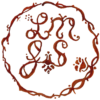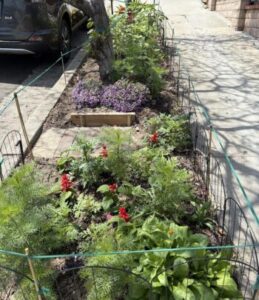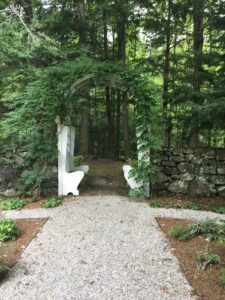Pots and Container types for Plants
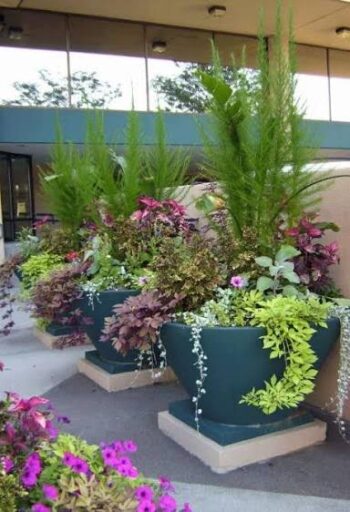
Continuing my blog series on potted plants I thought I would show some of the many pots for plants.
The two most common materials used for plant pots these days are ceramic and plastic. Plastic has the advantage of being less costly and lighter weight while ceramic insulates the plants roots better and can be better looking. Obviously, plastic pots are less breakable but they do become brittle over time in the sun. This factor means that they aren’t as long lasting as ceramic or clay pots.
I am not opposed to mixing pot types in a garden setting. Mostly for cost reasons, but also to give an eclectic feel to the garden. I prefer medium and large pots outdoors because they don’t dry out as easily and are in better proportion to the open areas outside. Large would be 24″ high and wide or larger and medium would be 18″ high and wide or larger.
The picture above shows pots for plants in all one size. This gives a nice background or edging to the path, and display area. In the garden it can look better to group pots of varied heights and sizes. This gives a lift to the height of the plants and builds a nice grouping.

Notice the decorative ceramic column they used to lift a small pot. I often use empty pots set upside down as platforms for smaller pots. This is a great way to use chipped or damaged ceramic pots. Cinder blocks, concrete pavers, wood blocks, or bricks can also be used as supports for pots when you a creating a grouping.
Plastic and Resin Pots for Plants
Plastic pots for plants can have the advantage of coming in colors that work well with your decorating scheme. And they often have their saucers built in as shown above. They are easy to drill extra holes into. Many plastic pots come with no hole drilled in the bottom so that you can use them as self watering pots (more about this later). They have markings to help guide you as to where to drill the hole on the bottom of the pot.
Resin is a similar product to plastic, so I have grouped them together. Recycled plastic is also included in my photos. Recycled plastic pots can have an interesting marbled appearance or texture to the surface. I noticed that they fade rapidly but most of the plastic and resin pots do this. The UV exposure outside is very hard on all manufactured products including umbrellas, furniture, spa covers, pots and cushions.
Here are a few examples of different shapes, sizes and colors of resin or plastic pots:
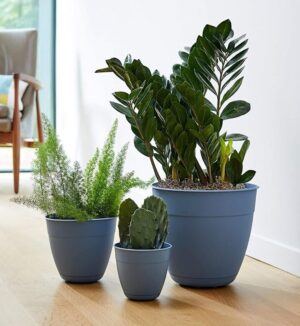
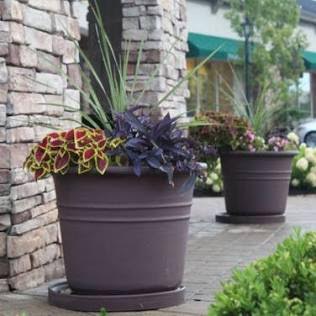
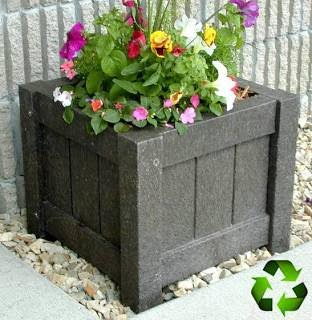

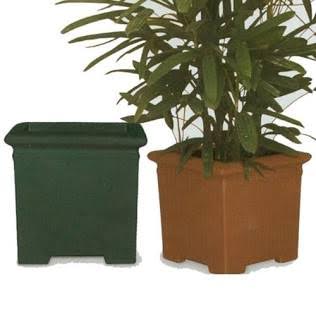
Ceramic and Terra Cotta Pots for Plants
Before plastics, clay and ceramic pots were the most common type of pot for plants. Unglazed clay is porous and has a thick wall. These are natural products and they work well with plant roots. The unglazed clay pots can discolor and become stained, so having a glazed pot makes cleaning them much easier.
Un-fired clay pots like Adobe will eventually break down on the surface with the action of water and rain. These heavy pots do insulate the roots well but are not a very good investment. They are not common in the U.S. Adobe pots are mostly found in Mexico.
The big urn shaped Chinese ceramic pots were used to ship products, by boat, from China in the past. My Mom called them Egg Jars because the Chinese used to ship brined eggs in them. These days they are made in a variety of countries and are an excellent investment because they are heavy and long lasting. You can get saucers to match.




This is the type of pot I would normally set into the landscape. Usually, where the soil is terrible or solid rock so that it makes it very hard to grow plants there. The heavy pots hold up well in the garden, because they didn’t tip over or break easily. Pots in the garden can get out of level so setting them on blocks or concrete pavers helps to keep them from becoming slightly at angle.
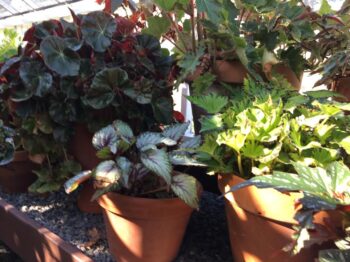
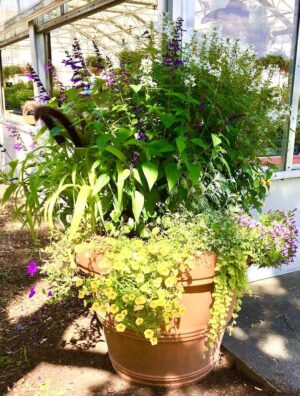
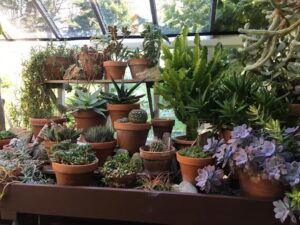
These are un-glazed, fired terra cotta or clay pots for plants. Commonly in use for several hundred years for greenhouses and gardens. They come in a large variety of shapes and sizes. Even animal shapes!
When using clay pots and really any type of pot, it is a good idea to wash them with a diluted bleach solution when re-using the pots. This will kill any pests and diseases that have lodged themselves in the walls and base of the pot. Saucers should be washed also.
Metal Containers and Pots for Plants
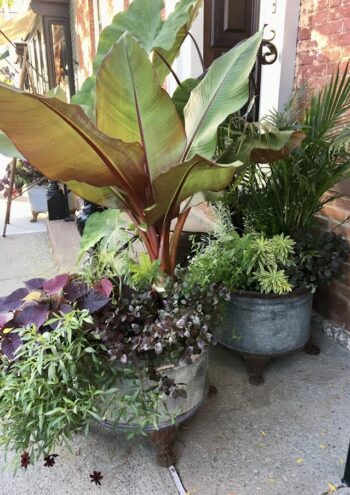
In the distant past Lead and Iron containers were common as a decorative and formal element in the home and garden. Often with a potted plant. Today, it is more common to see stainless steel or brass used for containers. It is typical to set plastic pots inside the metal containers and change out the plants with their plastic pots as needed. Metal pots can have an industrial feel like the ones above or have an old world feel like the brass containers brought from India or Turkey.
Metal is not my first choice for pots because, they can get hot and dry out. I would only use them in an area that gets just morning sun or use them indoors.
Metal and other pots can mark the surface they sit on, so set them up off the paving or deck with pot feet or small blocks. Use a saucer on patio areas, deck or balcony areas and especially indoors.
Which Pot Works
Like garden art, pots for plants can be very much a matter of personal taste and be fitted to your design scheme. Just don’t overdo it and end up with a mess of mixed pots including nursery containers.
Individual large pots set alone in the garden or on the patio are good, or a nicely grouped potted plant area with plants and pots of varied heights works. No need to crowd your entertainment areas or entry with pots.
Look to see how much room you have before you buy, and choose colors of pots that make you feel calm or happy. Material is important but so is your budget. Purchase the nicer thick wall ceramic pots over time and use plastic until you can afford the higher quality pots.
See my blog “Potted Plants” for how to plant your pots and the blog article “Plants for Pots” to help with some plant choices.
Making Pots “Self-Watering”
Big Planters and Pots in Strip Malls and Commercial Areas often have a water reservoir in the bottom of the pot. A maintenance worker comes around once a week and fills the reservoir, or an auto watering fill valve does it.
You can buy pots for plants already set up with this watering system online, or at garden centers, or you can fit a system for your own pot at home.
To use this type of system you need to start with a pot with no holes in the base. Or plug the hole in the base of the pot you want to use. A small hole will need to be drilled on the side of the pot as a drain outlet for the water reservoir. The fill pipe is just a piece of 3/4″(or larger) SCH40 PVC pipe. The Aeration Bench is a plastic or metal grid covered with drain cloth so the soil doesn’t seep down and fill the reservoir. The wicking basket supports the grid.
The advantage to this system is that the planters won’t dry out as easily between waterings. Diluted liquid fertilizer can also be applied easily.
You will need a few products from a garden supply or an irrigation business to make the pot self watering. I pulled a few diagrams off of Google images to illustrate this concept.
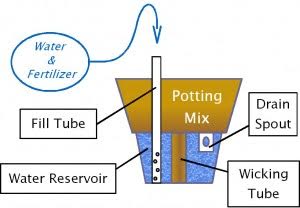
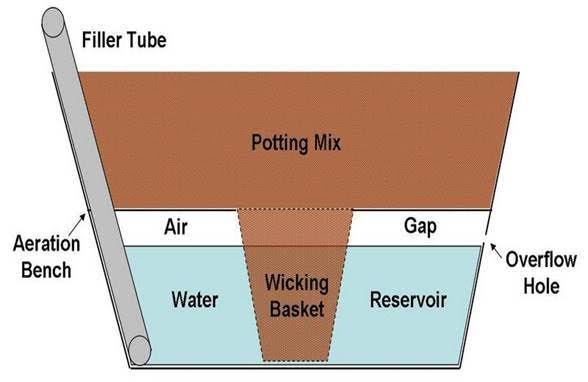
No Ordinary Pot
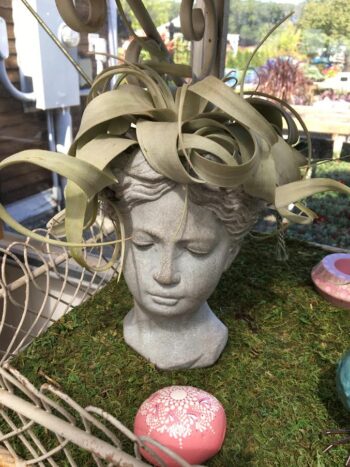
Making or buying an unusual pot for a plant can be fun. There are a lot of novelty pots available like the one above and then there are found items or upcycled objects that can be made into pots. Drill or make a hole for drainage and make sure there is enough soil in the container to support root growth and you are good to grow!
If your unusual container doesn’t have a hole, but you want to use it anyway, use a Tillandsia or air plant, or a plant that doesn’t mind wet roots like Coleus, or insert a plastic pot into the unusual container. Insetting an inner pots allows you to dump out excess water when needed. Any pot without a drainage hole should be monitored regularly to make sure you don’t drown your plant. I have a few Orchids in containers that don’t have drainage holes. I monitor them so they don’t get soggy but my plant sitter over waters them while I am gone. When I return I need to carefully turn the containers on their sides in the sink and drain out excess water. Being planted in orchid bark, these guys are easy to check for excess water and the orchid bark drains out easily when the containers are turned on their side.
Here are a few photos of unusual containers and some fun plants too:

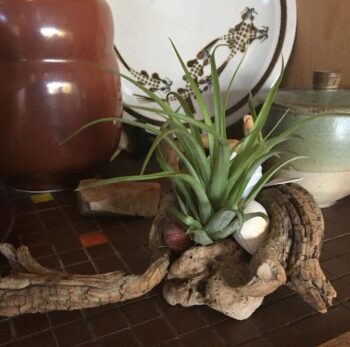
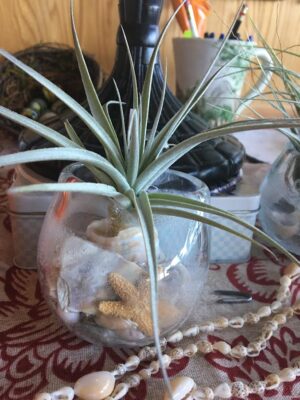
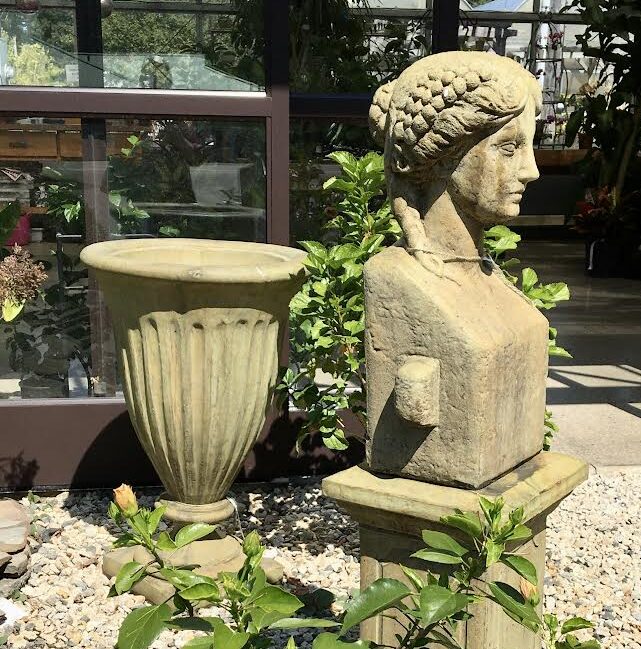
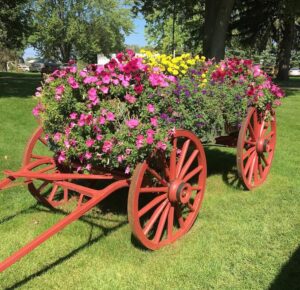
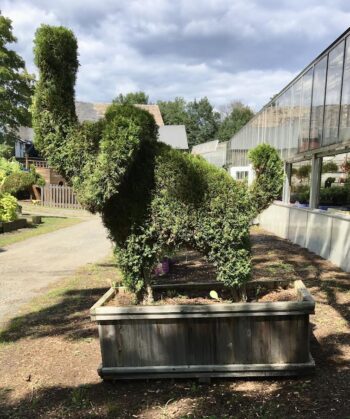
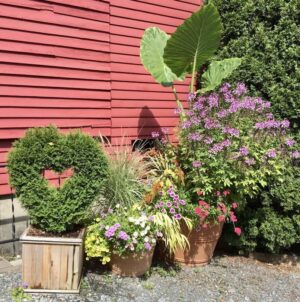
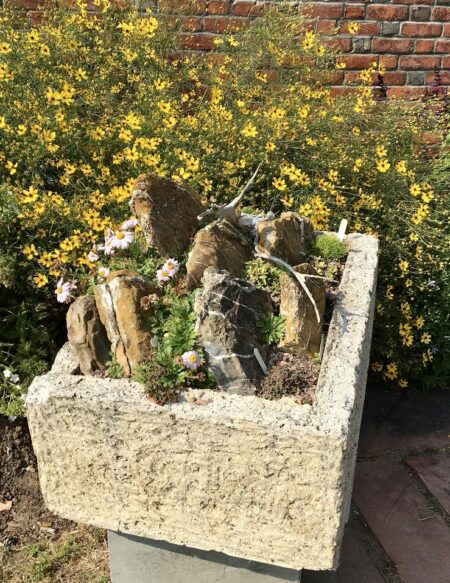
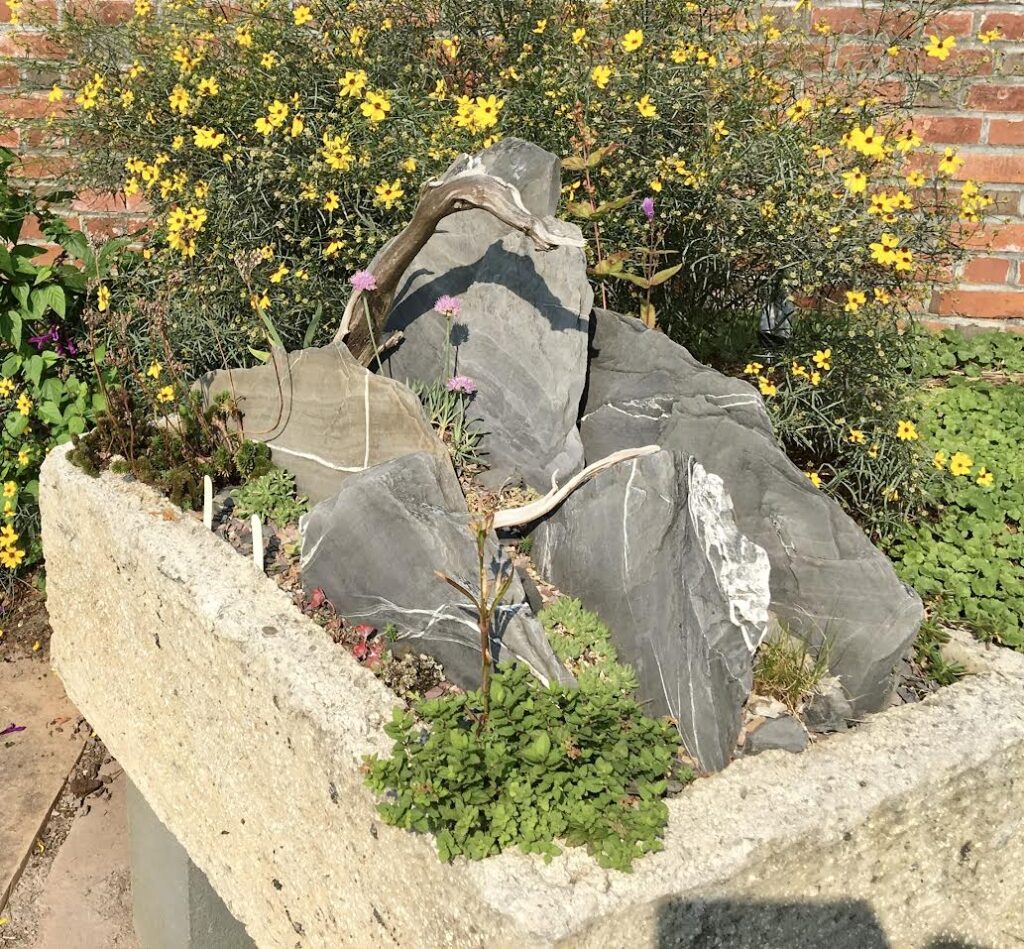
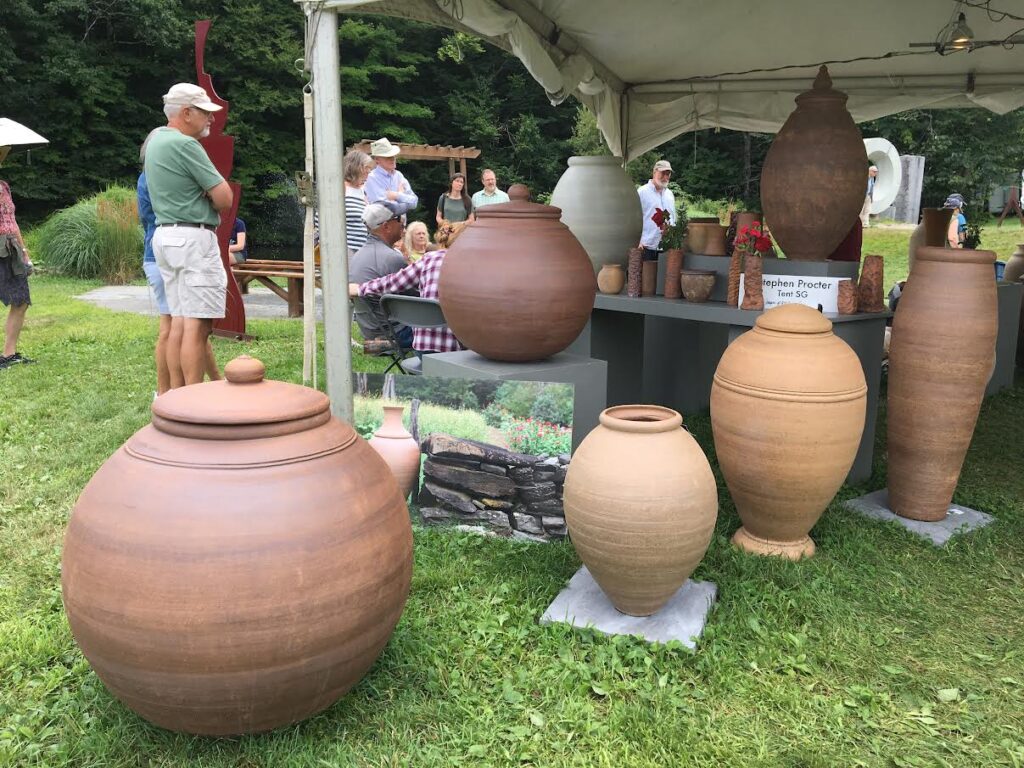
Hanging Baskets and Hanging Pots for Plants
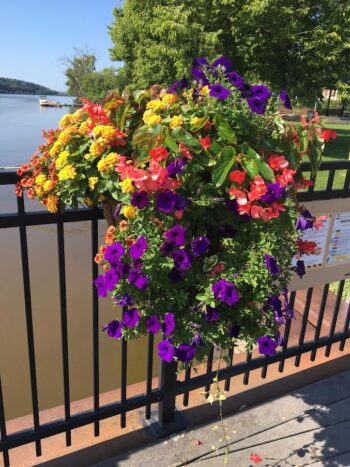
Hanging Baskets can be so beautiful. Hanging on eaves, in trees, along rails or in the top of an arbor or gazebo. They are hard though and need some care and planning to succeed. They are hard because they dry out so easily. The one pictured above is a photo I took in Vermont. The summer rain really helps with potted and hanging plants. Also the humidity is a factor. In California you seldom see hanging baskets like these- its just too dry and hot. The best examples are near the Seaside where temps aren’t so high and the air has some humidity.
If you do use hanging baskets:
*Water them every day till the water runs through.
*Use moisture retention potting soil.
*Locate them where they only get morning sun
*Regular fertilizing, tip pruning and dead heading of flowers helps keep the hanging basket looking good. It also stimulates growth to keep them full looking and not leggy.
*Hang pots where they won’t hit passerby’s in the head. Use sturdy hangers like eye hooks so they don’t fall. And take down the baskets in high winds.
*Consider using Succulents instead of Annuals if you are in a hot area. The above suggestions still apply.
Kinsman Company has a great line of hanging baskets and moss planters. My best experience with these planters was with Pelargoniums/Geraniums, succulents and spring flowering bulbs.
Other hanging baskets are usually plastic, which is actually good because, they are lightweight. If you are my age you will remember Macrame hangers with houseplants was a trend. Believe it or not they are making a comeback. These type of hangers cradle any type of pot so you can hang up your favorite plant and pot. Helpful when the pets are getting into your pots. It won’t help with Squirrels though!
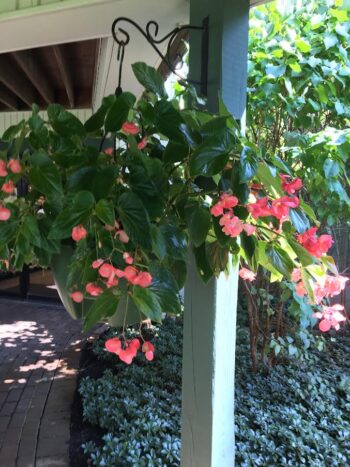

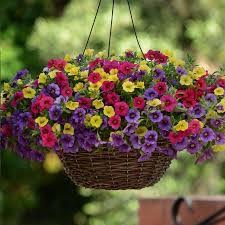
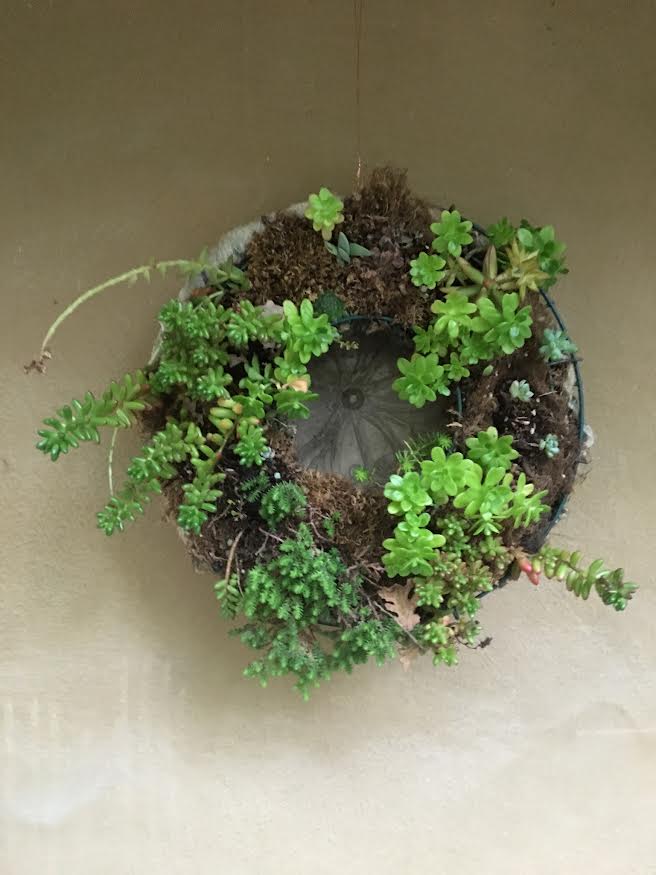
This is a Kinsman kit for a wreath planted with succulents. Its not fully filled in yet but that helps you see the moss layer that holds the soil into the wire metal frame.
Peat and Paper Pots for Plants
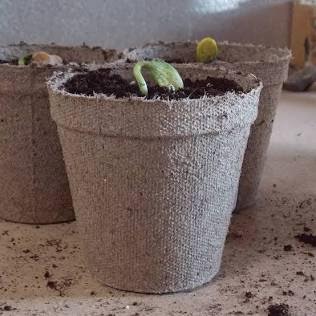
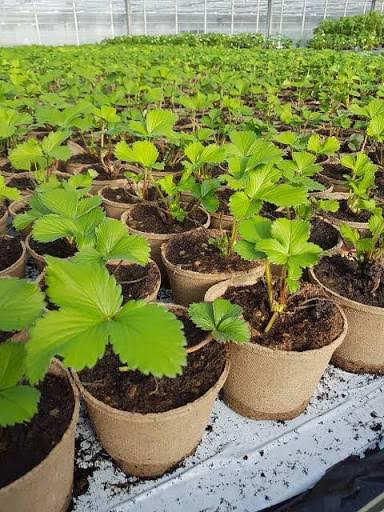
These pots are for growing small plants, cuttings and seeds. They can be buried directly into the garden when the plants are big enough. Do not use them as permanent containers because they break down readily. There are coconut fiber versions of these also. The coconut fiber doesn’t break down as fast.
All these types of pots don’t hold water well so set them on an old towel or thick newspaper layer that will stay wet when you water. This will help the plants to develop roots that move downwards in the direction of the water flow and will wick water to the pots.
Finding Nice Pots and Moving Them
The best source for pots for plants are pottery outlets, garden centers and nurseries. Amazon Prime is a huge competitor these days and ordering plastic pots from them is convenient. Heavy ceramic pots not so much. Home Depot and Costco get in shipments of really nice ceramic pots occasionally and the pricing can be very good. Remember to get the saucer too as needed. Art and Craft Shows sometimes have interesting containers and pots. Also pick up pots and containers from garage sales and estate close outs for great bargains. Sometimes they come with plants in them!
Always use a hand truck or moving dolly to move heavy pots. Even medium sized outdoor pots can be quite heavy. I just had to move a whole truckload of large potted plants and it was a chore. I needed multiple helpers and a moving dolly plus a long pry bar to shift the pots. If you rent a truck- make sure it has a ramp! Use folded up boxes and moving blankets between the pots to buffer them from hitting each other and tie down load to stop pots from sliding in the truck.
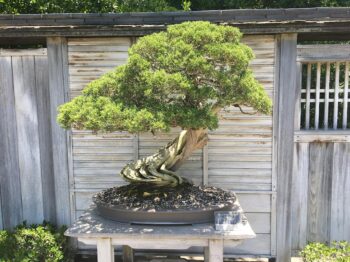
Questions about any of the blog articles are welcome! Send a comment using the comments section at the bottom of the blog. I am happy share information, as you can see!
